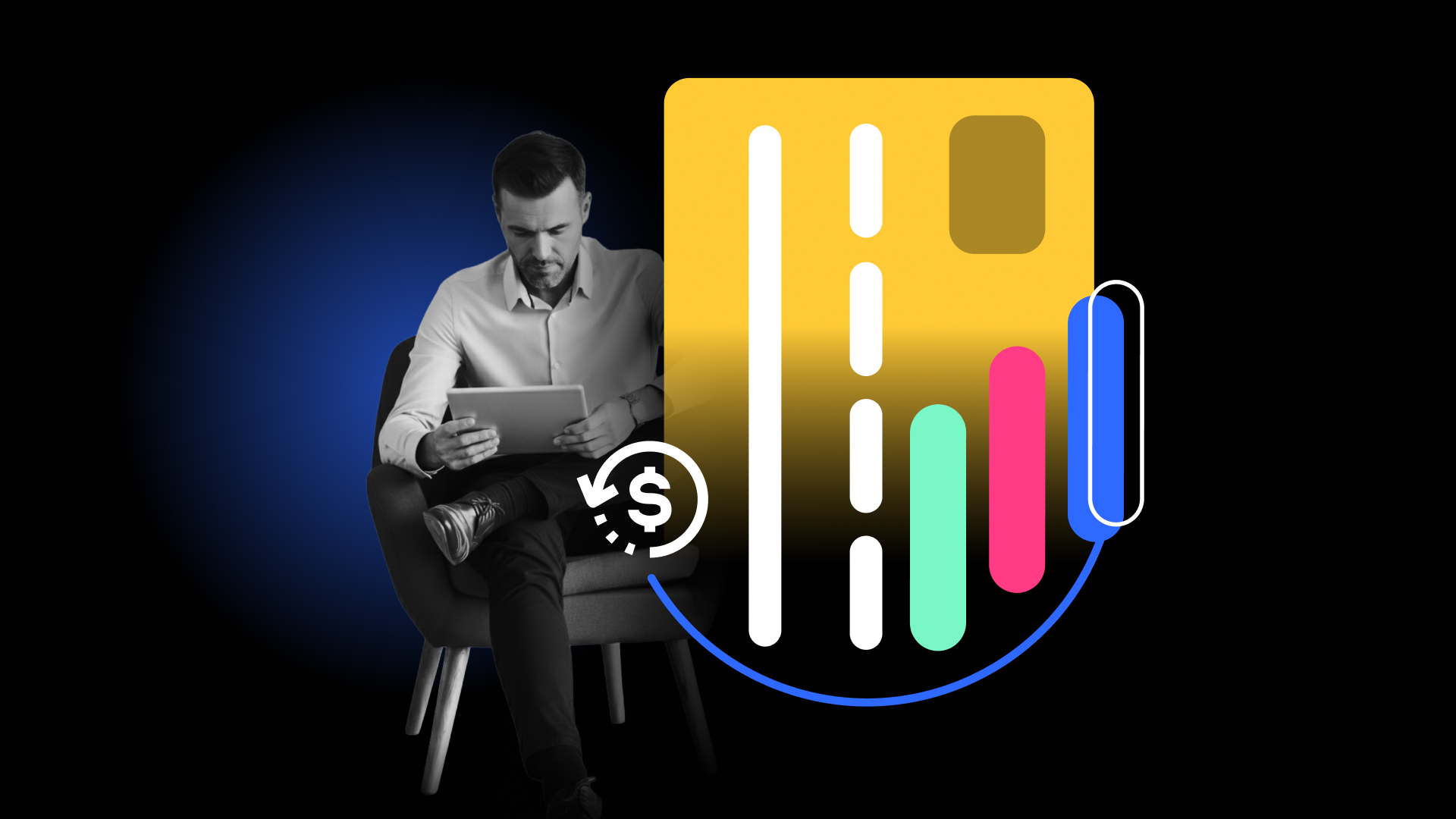Understanding money movement is crucial for good business. Without understanding how money moves, it’s difficult to protect your assets and customers from fraud. Read on to learn about the different ways money moves, including traditional money movement and new innovations that allow people and businesses to move money more quickly and securely online.
What is Money Movement?
Money movement encompasses any operation involving the transfer of funds from one account or entity to another within a financial system. Serving as the cornerstone of any economy, it plays a vital role in facilitating business transactions, settling bills, purchasing goods and services, and other essential aspects of economic activities. The growing demand for modern money transfer methods has led to an explosion in financial technology. But, this has also spurred an increase in fraudulent activity, emphasizing the importance of security in money movement.
Traditional Methods of Money Movement
Traditional methods of money movement tend to work well for low-volume transactions, but struggle to scale with business growth and are vulnerable to fraud.
-
Cash transactions
Cash transactions remain a foundational element in many economic processes. This enduring relevance is attributed to the fact that cash transactions don’t require a bank account, technological devices, or access to the Internet. In addition, some individuals prefer using cash due to considerations of privacy.
-
Bank transfers
Bank transfers involve the electronic movement of funds between different bank accounts. This financial transaction method is versatile, accommodating transfers of various amounts for purposes such as bill payments, business transactions, and personal financial management.
Common types of bank transfers include wire transfers, online banking transfers, and automated clearing house (ACH) transactions. These transfers can occur within the same bank or extend across different banks, providing a secure and convenient means of moving money.
-
Automated clearing house (ACH) transfers
The ACH system serves as a network facilitating electronic fund transfers among banks within the United States. Widely used for domestic transactions, such as direct deposits, bill payments, and person-to-person transfers, ACH transfers are typically processed in batches at scheduled intervals, such as daily or multiple times daily. Due to the use of batching, transactions may not occur instantly, leading to a delay of a few business days before funds are successfully transferred. Despite this slower pace, ACH transfers boast advantages such as being cost-effective and highly reliable.
Innovations in Money Movement
While traditional money movement methods remain functional, they face competition from high-tech solutions that challenge the conventional boundaries between banking, payments, and commerce.
Contemporary money movement technologies prioritize speed and security, enabling businesses to transfer larger sums at an accelerated pace. As money movement becomes faster, it’s also an increasing target for fraudulent transactions. Businesses look to solutions like Sift’s Platform to manage fraud and ensure secure growth while scaling operations.
-
Payment services
Payment services refer to a range of financial solutions facilitating transactions without needing physical currency. Payment services include banks, established card networks such as Visa and Mastercard, and innovative fintech companies. They encompass various methods, from traditional card transactions to advanced mobile and digital payment options. Payment services enable individuals and businesses to transfer funds, make purchases, and conduct financial transactions seamlessly, emphasizing convenience, speed, and security. The increasing use of payment services highlights the transition towards cashless transactions in today’s digital age.
-
Electronic funds transfers
Electronic funds transfers (EFTs) represent a broad range of financial transactions, including wire transfers, QR code payments, credit and debit transactions, and ACH transfers. This comprehensive category provides individuals and businesses with the convenience, efficiency, and security of conducting various financial transactions electronically, eliminating the need for physical checks or cash. The selection of a specific EFT method relies on factors such as the nature of the transaction, the parties involved, and the desired speed and cost of the transfer.
-
Online and mobile banking transfers
Online and mobile banking transfers have become increasingly popular, with a notable 78% of Americans opting for this convenient method. This preference stems from the ease with which customers can seamlessly transfer money between accounts or send funds to others through their bank’s dedicated application or website. The user-friendly interface and accessibility of these platforms contribute to their widespread adoption. In addition, online and mobile banking transfers often incur little to no fees, making them a cheaper choice than alternative methods.
-
Mobile wallets
Mobile wallets are a convenient solution for keeping digital financial information readily accessible. Platforms like Apple Wallet, Google Wallet, and Samsung Wallet provide a user-friendly method to store financial details on various mobile devices, including phones, tablets, and smartwatches. These software applications often offer enhanced security features compared to physical cards, utilizing encryption, PINs, passcodes, or passwords to safeguard information.
-
Peer-to-peer (P2P) payments
P2P payment systems are specialized money transfer applications that empower users to send and receive money on their devices without exposing their bank details. Notable P2P payment systems include Taptap Send, Venmo, Zelle, and Cash App.
-
Cryptocurrency
Crypto is an extremely hot topic in the fintech world. Cryptocurrencies like Bitcoin, Ethereum, and Monero provide a decentralized and digital avenue for transferring money. Users can engage in direct and secure fund transfers anonymously, eliminating the need for intermediaries such as banks.
Top Challenges with Money Movement
Despite the many methods available for moving money, the process is not always seamless or frictionless. Factors such as technical glitches, transaction fees, processing delays, and security concerns can impact the speed, reliability, and cost of transfers. Here are some of the major concerns that come up during money movement.
-
Transaction fees and delays
Financial institutions and payment providers often impose fees that vary in cost depending on the value, speed, and geographic location of a transaction. Additionally, processing delays are still a major issue. Legacy technologies, high transaction volumes, and complex verification processes can lead to frustrating delays for users who expect efficient money movement.
-
Regulatory compliance
Complying with domestic and international regulations is usually complex and can be expensive. Financial institutions and businesses must invest in compliance measures to ensure they meet regulatory standards. Any business that fails to achieve compliance risks legal repercussions, fines, and reputational damage.
-
Exchange rate fluctuations
When it comes to moving money across borders and between multiple currencies, transactions can be subject to unpredictable exchange rates. Volatile fluctuations in exchange rates may result in financial losses or gains, adding an element of uncertainty to international transactions.
-
Security concerns
It’s easier than ever to make digital transactions, but so is committing fraud and cybercrime. Criminals may find vulnerabilities in electronic payment systems that allow them to gain unauthorized access to accounts. Without sufficient security precautions, individuals and businesses can suffer huge financial losses in the blink of an eye.
How to Overcome Money Movement Challenges
Thanks to the range of options for conducting financial transactions, you should always be able to move your money efficiently and economically.
-
Comparison shopping
One way to avoid high transaction costs is to shop around. Look for services with transparent fee structures to select the most competitive transaction rates. Innovative fintech platforms are often able to provide lower fees compared to traditional banking services.
-
Real-time processing systems and automated verification
Up-to-date technology uses real-time processing and automated verification to streamline transactions and ensure quicker and more efficient money movement. This is a major advantage of modern fintech, drastically reducing transaction processing time.
-
Centralized compliance management
Centralized compliance management systems help financial institutions adhere to complex regulatory frameworks. Automated tools verify that transactions pass compliance checks in real-time, minimizing the risk of non-compliance and legal penalties. While they require regular audits to ensure they remain up-to-date, these automated systems are much more accurate and efficient than human compliance divisions.
-
Multi-layered security
Protect your business and customers with advanced security measures. A strong security strategy includes encryption, two-factor (2FA) or multi-factor authentication (MFA), biometric verification, and Know Your Customer (KYC) processes. These technologies significantly reduce the risk of fraud and protect sensitive financial information from unauthorized access. Advanced fraud detection systems enable proactive monitoring of suspicious transactions and will add an extra layer of protection.
You also need to protect against social engineering attacks. Employees and users are often the weak spots in your cyber defenses. By educating users and training employees in responsible online behavior, you can empower them to recognize and avoid potential threats and improve your overall security.
To see the impact of effective fraud protection for yourself, look no further than Taptap Send. Since its launch in 2018, Taptap Send has successfully moved millions of dollars, requiring robust payment fraud protection. By connecting with Sift’s real-time machine learning model, TapTap Send has been able to prevent payment abuse proactively. Sift has helped Taptap Send reduce its chargeback rate to a mere 0.1% and achieve a 96% score precision. Read the full case study.
Sift Payment Protection Helps you Move Money Securely
No matter how your business moves money, you deserve a way to ensure that your financial transactions are safe and legitimate. With Sift’s Payment Protection, you can avoid payment fraud, boost your revenue, and mitigate risks using a single solution. Sift uses advanced machine learning and detection technologies to identify 16K+ fraud signals. This allows us to automatically block suspicious transactions, prevent fraudulent currency movement, and enforce safeguards in real time.
Sift utilizes dynamic friction to detect and prevent fraud while allowing trusted customers a seamless customer journey. Our customers know that Sift will protect their customers and grow their business. For example, in the first three days of using Sift, Paula’s Choice saved $100k of fraudulent orders from being placed and went on to achieve 6X ROI with Sift Payment Protection.
See how Paula’s Choice dropped chargeback rates below 0.2% with Sift.







